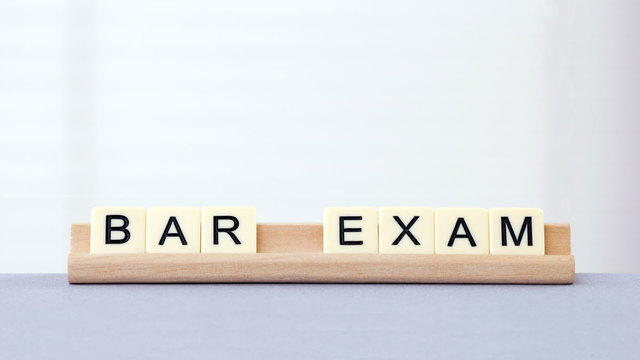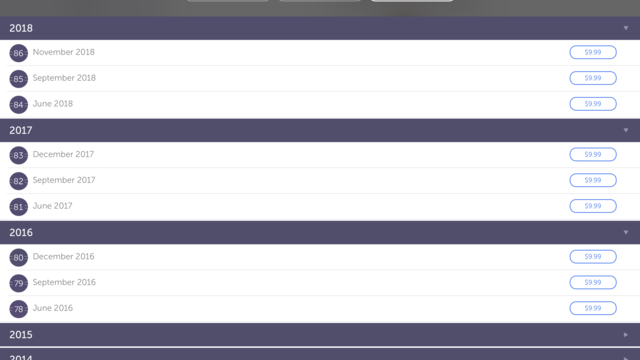We launched BarMax because we felt that bar review courses could be better—and affordable.
But really the key to our success was the former. Making bar prep more affordable is great, but if our course wasn’t effective, people wouldn’t care if it was free. The last thing anyone wants to do is retake the bar exam.
“Effective,” for us, didn’t mean creating a bar exam review course that only worked for those students who were expected to pass the bar exam on their first attempt. “Effective” meant working for those students who, according to conventional wisdom, were not expected to pass the bar.
We firmly believe that the reason most students fail the bar exam has absolutely nothing to do with intelligence and everything to do with their bar review course’s methodology.
For the past eight years, we have proven our hypothesis true time and time again. There was Marsha Teasely, who failed the California bar exam five times before passing on her first attempt with BarMax; Alfred DelGreco, who failed the NY bar exam for 18 years before passing on his first attempt with BarMax; Karen Wilson, who passed the Arizona bar exam despite working full-time while preparing; and Ran He, a foreign trained attorney, who only needed five weeks with BarMax to score a 331 on the NY bar exam (passing score is 266).
In order to ensure that your name also appears on the pass list when you take the bar exam, we will highlight the three pillars of bar exam success.
(1) Avoid the Kitchen Sink
Just looking at the amount of material provided by other bar review courses is overwhelming. A short outline, a long outline, a state-specific outline, an MBE outline . . . where do you even start?
Not surprisingly, these courses are accompanied by study schedules that recommend eight hours of prep per day.
Yet, somehow, BarMax students have been successful preparing for both the California bar exam and the New York bar exam while working full-time.
How is this possible?
It is very important to keep the bar in perspective, no pun intended. The standard to pass the bar exam is around a 65%, which is a D. This means that you do not need to be an expert in any subject, let alone all of them.
It is extremely important to minimize the amount of black letter law you are trying to digest and, eventually, memorize. You do not get bonus points for scoring higher than what is needed to pass, so why stress yourself out for no reason?
A “kitchen sink” approach, which overwhelms you with information, can prevent you from identifying and retaining the information you actually need to know to succeed on the bar exam.
BarMax was built with this principle in mind. Everything you need to pass, nothing more.
Not surprisingly, students who turn to BarMax, consistently report feeling far less overwhelmed:
“The outlines BarMax provides for each of the test subjects have all of the information you need to know, and they are not overwhelmingly long.” – Robin Krawchuk
“BarMax provides tightly focused, specific information and the tools they give you to help you remember the broader points are invaluable. It’s not overwhelming.” – Anthony Garrido
You won’t believe how much more information you will retain when you start focusing on the forest instead of on the details of every single tree.
(2) Only Use Real Questions
Last February, MBE scores officially hit rock bottom—the mean MBE score on the February 2017 bar exam was 134, the lowest February score in the history of aggregated MBE results.
Sadly, these results are not surprising given the prevalence of made-up MBE questions in bar prep materials.
Students who fail the bar exam after preparing with made-up questions consistently report that the questions they practiced with were not representative of the questions they encountered on the day of the bar exam.
It is a fundamental tenet of standardized testing to teach to the exam—and this requires the use of real, officially-licensed questions.
This is precisely why BarMax only uses real, officially-licensed questions from previous bar exams—real MBE questions, real practice essays and real performance tests.
By using only real questions throughout your bar prep, you will ensure that there are no surprises on exam day.
(3) IRAC
Lastly, do not make the mistake of underestimating the importance of formatting on the written portion of the bar exam.
Imagine you wrote the perfect answer to an essay question, but your response was formatted as one long paragraph with no line breaks. The odds are, you would fail.
Why? It is important to remember that the written portion of your bar exam will be graded by people, who are paid very little and who have stacks and stacks of answers to grade. As such, the more difficult you make it for the grader to follow your response, the less likely you are to receive a passing score.
For this reason, you want to write in a methodical and easy to follow format that you should remember from law school—IRAC (i.e. Issue, Rule, Application and Conclusion).
We recommend breaking down the discussion of every issue as follows:
Header = Issue
1st Paragraph = Rule
2nd Paragraph = Application
3rd Paragraph = Conclusion
For issues with multiple elements, such as negligence, we would also recommend creating sub-headers for each element (e.g. duty, breach, causation and damages) followed by RAC.
This approach will help you avoid creating large blocks of text that require your grader to hunt for the different parts of your answer.
By formatting your answers using IRAC, a grader, who is skimming, will easily be able to identify the different parts of your response and give you maximum credit.
Less work for your grader means a higher score for you. This is also why we recommend using a laptop on the bar exam as opposed to handwriting your responses. Even the nicest penmanship ends up looking like chicken scratching under time pressure.
So there you have it! Whether you are a first time taker or a repeater, following these three keys will ensure your name appears on the pass list when you sit for the bar exam.












